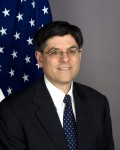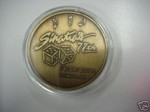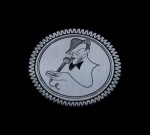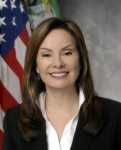November 2020 Numismatic Legislation Review
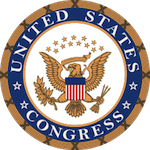 As part of the Lame Duck session, when Congress attempts to look busy while leadership negotiates or stalls negotiations of spending bills, it is time to pass commemorative coin legislation.
As part of the Lame Duck session, when Congress attempts to look busy while leadership negotiates or stalls negotiations of spending bills, it is time to pass commemorative coin legislation.
First up is H.R. 1830, the National Purple Heart Hall of Honor Commemorative Coin Act. The bill will create a gold, silver, and clad half-dollar program in 2021 to honor the National Purple Heart Hall of Honor in New Windsor, New York. The bill passed the Senate with an amendment allowing the U.S. Mint to strike the coin anywhere if the U.S. Mint cannot exclusively strike the coins at the West Point Mint. The House has to agree with the amendment before being sent to the president for his signature.
H.R. 1830: National Purple Heart Hall of Honor Commemorative Coin Act
The Senate found fewer issues with H.R. 4104, the Negro Leagues Baseball Centennial Commemorative Coin Act. The bill will create a gold, silver, and clad half-dollar program in 2022 to honor the Centennial of the Negro Leagues (2020) and raise funds for the Negro Leagues Baseball Museum in Kansas City, Missouri. The bill passed the Senate by unanimous consent and has been sent to the president for his signature.
H.R. 4104: Negro Leagues Baseball Centennial Commemorative Coin Act
A source reported that H.R. 7995, the Coin Metal Modification Authorization and Cost Savings Act of 2020 has growing interest in both chambers. H.R. 7995 brings up interesting questions regarding policies and what Congress is requesting. More on this another time.
Counting Down the Top 10: #9 The Trillion Dollar Nonsense
If there was a countdown of the idiocy of the punditocracy of this country, the discussion over the $1 Trillion platinum coin would be the number 1 story. As I previously explained, which it is feasible for the U.S. Mint to strike a $1 Trillion coin, the question remains, “Who will buy the coin?” In order for the U.S. Mint to gain from the seigniorage that would come from minting and selling this coin.
If the coin is has to be paid for by a depositor before it can become legal tender, who will buy a $1 Trillion coin?
How could the coin be used to reduce the debt? If the coin is just deposited with the Federal Reserve, there will be a $1 Trillion liability on the government’s balance sheet. In order to make the books balance, the Department of Treasury would have to sell debt bonds to make up the difference and that would add $1 Trillion to the national debt.
If the coin is bought by the Federal Reserve, then the Fed will have to pay $1 Trillion to the U.S. Mint for the coin reducing its overall working capital by $1 Trillion. Paying for a $1 Trillion that could not be used will just transfer the debt from the general treasury to the Federal Reserve. Since the Federal Reserve is in charge of managing the country’s money supply, the net effect will be to reduce the money supply by $1 Trillion that will cause the economy to shrink—any time you artificially remove money from the economy it will shrink which will also weaken the buying power of the U.S. dollar.
Transferring the debt away from the general fund might look good on paper but the effect will shrink the economy and cause more problems than even considering the constitutionality of doing this.
The bottom line is that regardless of what the U.S. Mint sells, there has to be a buyer. If there is no buyer then all the government would do is transfer balances from one balance sheet to another without any net gain.
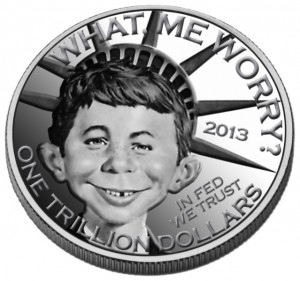
Dallas-based Heritage Auctions, held a mock contest on Facebook for the public to design a potential $1 trillion coin. The concept of a coin was even a joke to the folks at Heritage whose mockup included famed Mad Magazine “pitchman” Alfred E. Newman.
Counting Down the Top 10 of 2013
It is that time of then when the pundit class of this country puts together their list of the best, worst, or most impactful stories of the year being concluded. There was even an advertisement on satellite radio about an upcoming show that will list the Top 10 moments in music for 2013. After a meeting of the Board of Directors for the Coin Collectors Blog (all three of us: me, myself, and I), the last ten days of the year will count down what we feel are the Top 10 Numismatic-Related Stories of 2013.
Number 10: Lew’s Lewpts
In one of the more fun stories of 2013 started following the nomination of Jacob “Jack” Lew to succeed Timothy Geithner as Secretary of the Treasury. One of the “issues” surrounding Lew’s nomination was that his autograph was far from conventional. As one of the co-signers of U.S. currency, collectors became interested in what the new autograph would look like. On one hand there were the series of loops that Lew has passed off as his autograph even while a member of the White House staff. On the other was the alleged promise Lew gave the president to provide a clearer signature for U.S. currency.Lew, whose autograph has been called “lewpty” and been compared to the decorative icing on a Hostess cupcake, made a promise to the president that he would do better with his penmanship. During his confirmation hearing, Lew told Sen. Max Baucus (D-MT), Chairman of the Senate Finance Committee, that he promised the president he would do better. This did not satisfy those with an ironic sense for the different when a petition appeared on the White House website to “Save the Lewpty-Lew.”
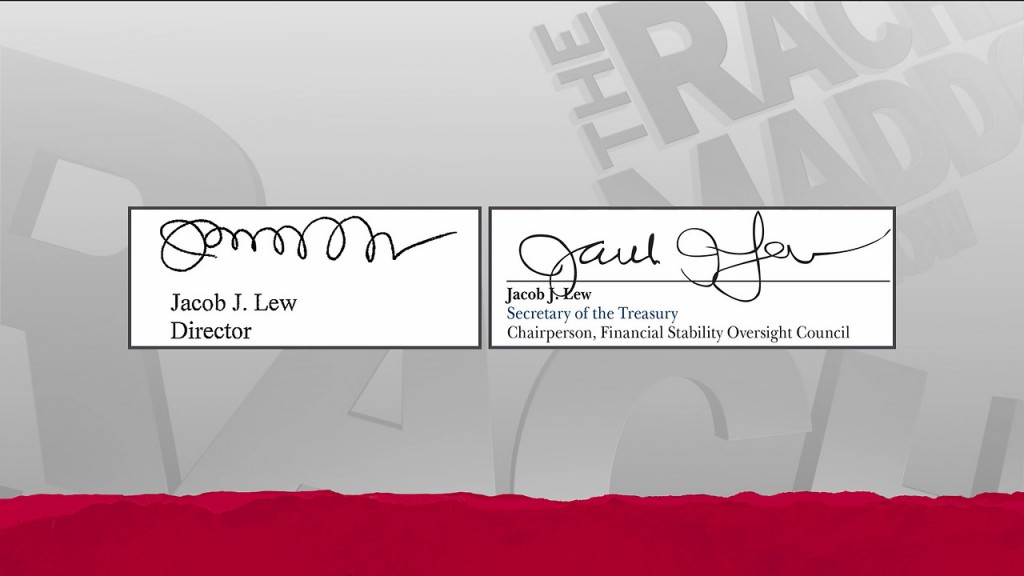
MSNBC on-air comparison of Jack Lew’s autographs: the original Lewpts on the left and what will appear on U.S. currency to the right.
The other signature on U.S. currency is that of Rosa “Rosie” Gumataotao Rios, Treasurer of the United States. Rios was sworn in as Treasurer on August 20, 2009 and has served in that office ever since. Rios’s signature appears with former Secretary of the Treasury Timothy F. Geithner on Series 2009 notes. Ironically, Geithner also changed his signature when he became secretary.
- Tim Geithner’s autograph before becoming Treasury Secretary.
- Tim Geithner’s signature as it appears on U.S. currency
Notes that will include Jack Lew’s signature will appear on all Series 2009-A notes.
Glad we were able to resolve this pressing issue!
He did it his way!
Let me play among the stars
Let me see what spring is like
On a-Jupiter and Mars
Born in Hoboken, New Jersey, Sinatra never graduated high school having been expelled for not being a good buy. While working as a riveter and delivering newspapers, Sinatra used to sing for tips—something he had done since he was eight years old. Eventually, Sinatra began signing at local clubs in Hoboken before becoming a professional singer in the 1930s.
Sinatra was a troublemaker throughout his career. Starting with his break-up with the Hoboken Four and subsequent disagreements with Tommy Dorsey, Sinatra went in the 1040s and the beginning of World War II as a capable musician but not liked amongst his peers. Although he was classified as 4-F for military service (“Registrant not acceptable for military service” by the draft board) because of a perforated ear drum, many active-duty entertainers and journalists hated that he flaunted his lifestyle while many were serving, even if they were just entertaining or acting as clerks without the fame or glamor.
Although Sinatra started to act in 1944 and co-starred with Gene Kelly and Kathryn Grayson in Anchors Aweigh, Sinatra returned to acting to help repair his image. He co-starred with Gene Kelly and Esther Williams in Take Me Out to the Ballgame to critical acclaim.
You think you’ve seen the sun, but you ain’t seen it shine
Sinatra was a his acting stride in 1960 when he starred with Dean Martin, Sammy Davis Jr., and Peter Lawford, the original “Rat Pack,” in Ocean’s Eleven. He appeared in 17 more movies until 1970. After 36 years in show business, Sinatra announced his retirement in 1970.
Of course he made a comeback playing concerts and making guest television appearances. Sinatra also sang for songs that appeared in movies and later appeared with other artists in duets. He was one of the recipients of the 1983 Kennedy Center Honors with Katherine Dunham, James Stewart, Elia Kazan, and Virgil Thomson.
Sinatra’s last public concert was held in Japan in December 1994. The last time he sang for an audience was at a private part for the closing night of the Frank Sinatra Desert Classic golf tournament in February 1995. He ended the show singing “My Way.”
After that show he began reducing his appearances and stopped appearing publicly following a heart attack in February 1997. He died in May 1998 following a second heart attack at Cedars-Sinai Medical Center at 82 years old.
Frank Sinatra courted controversy throughout his life. Although a later release of FBI files showed he had almost no ties to organized crime, Sinatra embraced that controversy in order to overcome his own insecurities and to gain acceptance and access to what was then mob-controlled Las Vegas, where he saw great success. In fact, the Gaming Hall of Fame inducted Sinatra as a member in 1997.
And so I face the final curtain
My friend, I’ll say it clear
I’ll state my case, of which I’m certain
I’ve lived a life that’s full
I traveled each and ev’ry highway
And more, much more than this, I did it my way.
Hobo Nickel by AG can be found on this page.
U.S. Mint gets into the holiday sales spirit
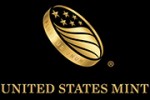 While the products that the U.S. Mint can offer are restricted to what congress allows them to do by law, it does not mean that congress controls how the U.S. Mint markets and sells its numismatic products. To try to get more people to buy its products, the U.S. Mint has made a series of announcements,
While the products that the U.S. Mint can offer are restricted to what congress allows them to do by law, it does not mean that congress controls how the U.S. Mint markets and sells its numismatic products. To try to get more people to buy its products, the U.S. Mint has made a series of announcements,
Free is still better
U.S. Mint’s Black Friday and Cyber Week sale of FREE SHIPPING for items sent via standard shipping that was supposed to end at 5:00 PM ET today, December 6th, has been extended to5:00 PM ET on December 17th. The U.S. Mint cited they are doing this for holiday “shoppers seeking online deals and discounts.” December 17 is also the first day of sale of the 2013 Teddy Roosevelt Coins and Chronicles set. Those interested in the Coins and Chronicles set can have it shipped free if they order the set on December 17.
New brick and mortar storefront
Last month, the U.S. Mint “partnered” with the Bureau of Engraving and Printing by cross advertising each other’s products on their websites. Essentially, these Department of the Treasury bureaus created a page on their respective websites pointing to each other.
In a move that those of us with experience working with the Department of the Treasury considers astounding, the public store at the Bureau of Engraving and Printing on 14th Street SW in Washington, D.C. will now sell U.S. Mint products. Selling coins and medals at the Bureau of Engraving and Printing store will add a news sales outlet after closing the kiosk at Union Station earlier this year. Visitors to BEP will be able to purchase all of their current numismatic products after taking the fascinating tour of the world’s largest paper currency manufacturer.Credit for this move can probably be given to Deputy Director and Acting Director of the U.S. Mint Richard Peterson, Director of the Bureau of Engraving and Printing, Larry Felix, and Treasurer of the United States Rosie Rios. What makes this interesting is that Peterson and Felix are career government employees and were not appointed by the President.
Peterson began his work with the U.S. Mint in 2009 when he was hired as their Associate Director of Manufacturing.
Felix, a long-term professional employee of the Bureau of Engraving and Printing, has been the bureau’s Director since January 2006.
Although Rios was appointed by President Obama and took office in August 2009, has not been the prototypical political appointee. Rios has been outspoken in her support of the numismatic community and seeks out ways to participate. She is a staple at coin and currency shows autographic Series 2009 $1 Federal Reserve Notes that bear her signature—something she calls “Rosi notes.&rdquots; It would not be surprising to learn she was instrumental in making this cross-bureau initiative happen.
Get your Rosie Dollars autographed
Speaking of Treasurer Rosie Rios, she will be at the Bureau of Engraving and Printing Washington Visitor Center on 14th Street at the corner of C Street. Rios held an autograph session on December 6 and will hold another on Friday, December 20 from 10:00 AM to noon. Although the announcement sent to the press did not mention limits, those managing her appearances usually limits autograph requests to two notes per person.The BEP will allow visitors to exchange notes on site and have a supply of new $100 Federal Reserve Notes to purchase for Rios’s autograph. Having a $100 note autographed by Rios would be interesting. Many people may not spend $100 to set aside for this type of collectible making it possible that it could increase in value. How many speculators will there be at her next autograph session?
Last chance!
As we approach the end of the year, the U.S. Mint announced that they will be ending sales of the 2013 5-Star Generals Commemorative Coin Program and Girl Scouts of the USA Centennial Silver Dollar. Also on the last chance are 2012 coin sets, 2012 Platinum American Eagles, and 2012 First Spouse coins.
Summary of November coin-related legislation
Cue the crickets…
There were no bills introduced, discussed or voted on by congress in November.
Regardless of the side of the political aisle you sit there is no denying that congress’s approval ratings being at an an all time low is not surprising. In the context of numismatics, congress decides what is produced making those of us interested in the numismatic market a watcher of congress as closely as the spot prices of precious metals. The monthly article describing the monthly legilsative activity in congress is from watching what may be in the pipeline for future products from the U.S. Mint.
Just so there is something to report, here is a list of the coin-related legislation and its status for the 113th congress:
Signed into Law
Believe it or not, there has been some law making in this congress. The following has passed both the House of Representatives and Senate and has be signed by the President of the United States into law:
H.R. 1071: To specify the size of the precious-metal blanks that will be used in the production of the National Baseball Hall of Fame commemorative coins.
See the information about this bill at http://www.govtrack.us/congress/bills/113/hr1071
Passed in the House of Representatives
Bills introduced and passed in the House of Representatives are sent to the Senate for consideration. The following bill passed the House and is awaiting action in the Senate:
H.R. 2754: Collectible Coin Protection Act
Track this bill at http://www.govtrack.us/congress/bills/113/hr2754
Introduced in the House of Representatives
Coin-related bills introduced in the House of Representatives are usually referred o the House Committee on Financial Services. Bills referred to other committees are noted in the following list of bills introduced in the House:
H.R. 77: Free Competition in Currency Act of 2013
Track this bill at http://www.govtrack.us/congress/bills/113/hr77
H.R. 220: Stop the Coin Act
Track this bill at http://www.govtrack.us/congress/bills/113/hr220
H.R. 627: National Park Service 100th Anniversary Commemorative Coin Act
H.R. 1218: Commemorative Coins Reform Act of 2013
Track this bill at http://www.govtrack.us/congress/bills/113/hr1218
H.R. 1653: Pro Football Hall of Fame Commemorative Coin Act
Track this bill at http://www.govtrack.us/congress/bills/113/hr1653
H.R. 1719: Cents and Sensibility Act
Track this bill at http://www.govtrack.us/congress/bills/113/hr1719
H.R. 1905: Mother’s Day Centennial Commemorative Coin Act
Track this bill at http://www.govtrack.us/congress/bills/113/hr1905
H.R. 2366: World War I American Veterans Centennial Commemorative Coin Act
Track this bill at http://www.govtrack.us/congress/bills/113/hr2366
H.R. 2633: Thirteenth Amendment Commemorative Coin Act
Track this bill at http://www.govtrack.us/congress/bills/113/hr2633
H.R. 2760: Panama Canal and Pan-Pacific Exhibition Centennial Celebration Act
Track this bill at http://www.govtrack.us/congress/bills/113/hr2760
H.R. 2932: United States Coast Guard Commemorative Coin Act
Track this bill at http://www.govtrack.us/congress/bills/113/hr2932
H.R. 3146: Savings, Accountability, Value, and Efficiency (SAVE) II Act
Track this bill at http://www.govtrack.us/congress/bills/113/hr3146
Track this bill at http://www.govtrack.us/congress/bills/113/hr3305
Introduced in the Senate
Even though financial bills are constitutionally required to begin in the House of Representatives, it is not beneath the Senate to introduce their own legislation or concurrent bills with the House. Coin-related bills introduced in the Senate are usually referred to the Senate Committee on Banking, Housing, and Urban Affairs. The bills introduced in the Senate are as follows:
S. 94: To terminate the $1 presidential coin program
Track this bill at http://www.govtrack.us/congress/bills/113/s94
S. 203: Pro Football Hall of Fame Commemorative Coin Act
Track this bill at http://www.govtrack.us/congress/bills/113/s203
S. 768: Sound Money Promotion Act
Track this bill at http://www.govtrack.us/congress/bills/113/s768
S. 1011: Boys Town Centennial Commemorative Coin Act
Track this bill at http://www.govtrack.us/congress/bills/113/s1011
S. 1105: Currency Optimization, Innovation, and National Savings Act
Track this bill at http://www.govtrack.us/congress/bills/113/s1105
S. 1158: National Park Service 100th Anniversary Commemorative Coin Act
Track this bill at http://www.govtrack.us/congress/bills/113/s1158

